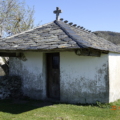The Necropolis of Fossa, also known as “Abruzzo’s Little Stonehenge,” is a significant archaeological site in central Italy, reflecting nearly 1,000 years of history from the 9th to the 1st century BCE. Discovered in the 1990s, this site was used by the Vestini, an Italic people, and later incorporated into Roman culture. The necropolis features diverse burial styles, including tumuli with stone circles, monumental chamber tombs, and simple pit graves, evolving over time with Eastern, Greek, and Etruscan influences. Highlights include rich grave goods, such as ceramics, jewelry, and funerary beds, showcasing social stratification and artistic refinement. In the Roman period, cremation became prevalent, marking a shift in burial practices. This well-preserved site offers a comprehensive view of burial traditions and cultural evolution in the region.
- Address
Via S. Massimo d’Aveja, Fossa, Italy - Web
https://www.sitiarcheologiciditalia.it/necropoli-di-fossa/ - Visiting Hours
Saturday and Sunday from 10:00 to 13:00 and from 16:00 to 18:00 - What to see
Tombs




